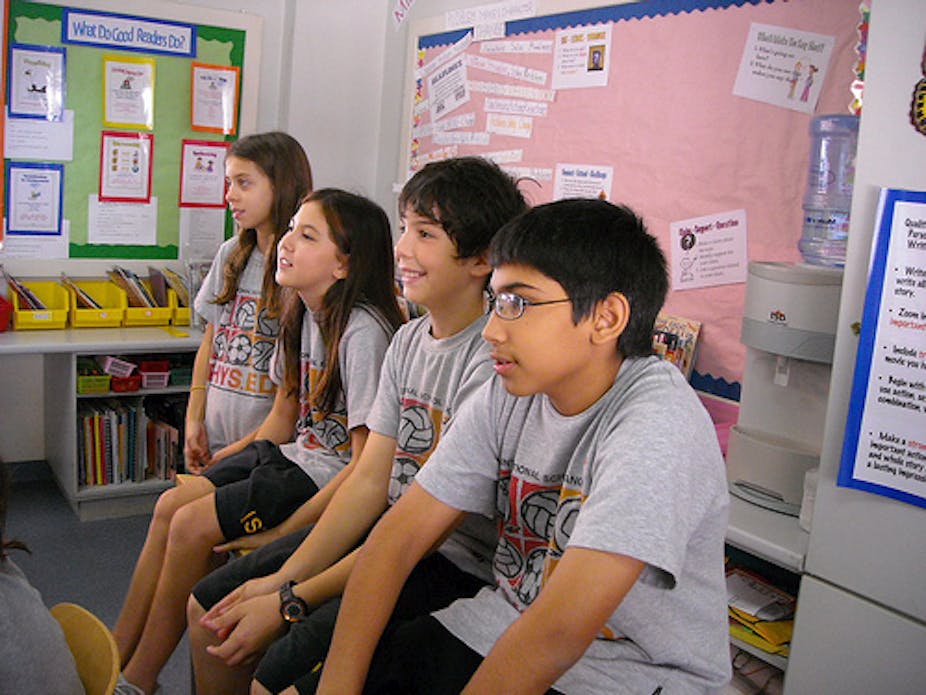The latest international comparisons show there is an urgent need to improve Australian student outcomes.
The OECD Program for International Student Assessment (PISA), which has measured the performance of 15-year-olds in reading, mathematics and science every three years since 2000, shows Australia is slipping down the rankings.
Worryingly, the gap between our lowest and highest performers remains larger than the OECD average while, in reading, our most marked decline has been among our highest performers.
Placing an excellent teacher in every classroom is a key part of addressing this. As John Watson argued in The Age last month, there is a good case for making selection into the profession more restrictive.
Although this would reduce teacher numbers and increase class sizes, research shows teacher effectiveness has a much greater impact on student outcomes than class size.
However, we need teachers who are able to personalise students’ learning, taking account of individual differences and enabling all students to develop, which requires much more than a restrictive intake into the profession to bring in higher performers. It requires professional training. Teachers are not born, they are also made.
Teacher education suffered for a long time from teaching being almost the last of the cottage industries. Teacher education was conducted primarily in schools with novices learning from existing practitioners in an apprenticeship.
When teachers’ colleges were developed, they were typically staffed with excellent practitioners whose job was to provide systematic tips for new teachers.
The transition of teachers’ colleges into universities added an important theoretical dimension to teacher education but introduced a risk of greater separation from practice.
While the previous arrangement might have worked in practice, it suffered from a lack of theory. The new university model risked teacher education working in theory, but not in practice.
In the UK, which faces similar challenges to Australia, a think tank has suggested removing universities from teacher education, in favour of a return to school and employment based routes. I don’t agree. What we need is a strong connection between theory and professional practice.
It needs to be much stronger than the loose connection we often see between university coursework and “practice teaching” that results in an extraordinary proportion of teacher education graduates believing that they are not well prepared for professional practice.
The Australian Education Union put the figure at 60% and the Australian Council for Educational Research says more than 50% of beginning teachers always feel unprepared for teaching (and their figures include 7 other countries).
Teaching is a complex and challenging task that demands strong and sophisticated professional preparation. It is not good enough for more than half our beginning teachers to feel ill-prepared for the classroom.
In 2007, Harvard’s Professor Richard Elmore said “Teaching is a profession without a practice”. He added, “Within a true profession an individual does not have autonomy over its body of knowledge and its practice”.
That clearly applies in other professions such as medicine, law, dentistry or accountancy, which have a body of practice and knowledge that must be learned, mastered and implemented within agreed and non-negotiable norms.
In teaching, professional status is often taken to be a licence for idiosyncratic practice. Teacher education embedded exclusively in practice enshrines that view.
We need instead to recognise teaching as a clinical practice profession where there is a body of knowledge and research which underpins professional practice. This means introducing clinical teaching models, like those used in medicine, where theory and practice are interwoven, with students offered support from expert staff who have one foot in the university and another in the school.
We also need to prepare our teachers to personalise learning opportunities that challenge all students to improve on their current performance levels.
This developmental approach assesses what a child is ready to learn, and contrasts with more remedial approaches that identify issues to ‘fix’. It requires teaching practices that are informed by data that tell the teacher exactly what the child is ready to learn.
This clinical approach is a radical shift from the traditional teacher education model, but it is being increasingly recognised as the way forward for teacher education, both here in Australia and overseas.
It is the basis of the University of Melbourne’s new Master of Teaching. In an independent evaluation, the Australian Council for Educational Research found that 90 per cent of the Master of Teaching graduates considered themselves either “well” or “very well” prepared for the classroom; a stark contrast to our national average of 42 per cent and figures that have never exceeded 50 per cent for graduates from other teacher education programs investigated.
The lesson? Good teachers are created by training, best practice and dedication, not mere luck.

